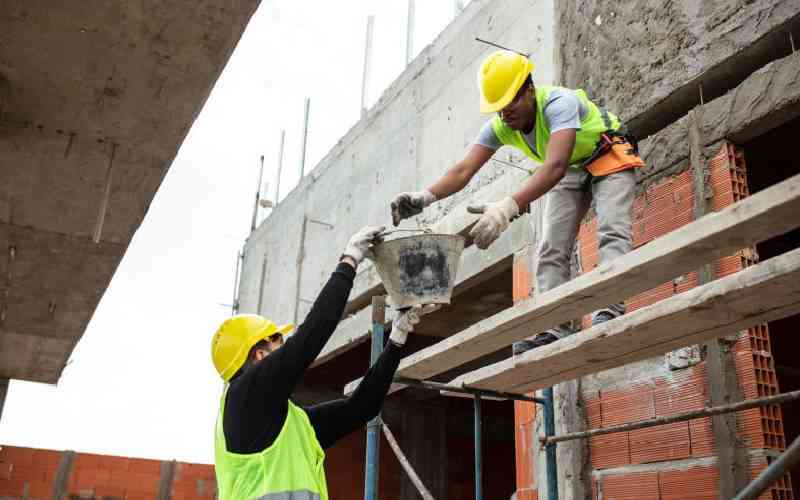As the government continues to lower taxes in a bid to cushion the economy from the devastating effects of Covid-19, economists have been debating whether the new tax relief measures will drastically reduce revenue going to the State, leading to a slowdown in government operations.
The evidence on the ground suggests that this is unlikely to happen. Already, clues are starting to emerge regarding which sectors the government will be turning to for additional tax revenue. The real estate sector is a prime candidate. Only last week, tucked away in a hidden corner of one of the local newspapers, a notice from the Kenya Revenue Authority in conjunction with the Ministry of Lands and Physical Planning notified all leasehold owners about the obligation to pay land rent annually as required under Section 28 of the Lands Act. This could just be the beginning of the new revenue strategy that the government will be deploying in post-Covid Kenya.
The public notice from KRA observed that there has been a common trend among leasehold owners to only pay land rent upon transfer or charge of their property. It is easy to see why this practice is no longer tenable, particularly at this time when government needs every shilling. There is a high likelihood that the same approach might be adopted by county governments with respect to payments of land rates.
Naturally, this will place a greater financial demand on leasehold owners who might have in the past failed to comply. As it stands, land rates are calculated based on 34% of the unimproved site value. The site value has historically been anchored on land valuation that was conducted in 1980, and therefore the amounts in question have been relatively low and easy to comply with.
However, recent efforts by City Hall to revalue land in Nairobi will see land rates shoot up astronomically, particularly in areas which have seen a sharp appreciation of land over the past years. Take, for example, one acre in Nairobi’s Upper Hill business district. In 2002, the value of that property was Sh50 million, which later appreciated to Sh120 million in 2010 and ultimately ballooned to Sh552 million in 2019.
Even if the new land rates are capped at the proposed one per cent of the property value, the owner of the land will have to part with a whooping Sh5.52 million every year. Assuming the piece of land has been relatively idle, generating no income for the landowner, there will be serious pressure to either commercially develop the property or sell it off entirely to reduce the liabilities placed upon him by the government.
These attempts by the government to formalise revenue collection from leasehold owners will direct the real estate industry to resemble that of South Africa or the United States, which have minimal speculative activity. The obvious outcomes of these new measures, coming at a time when the Kenyan economy is operating on a wing and a prayer, will be seen in a general decline in demand and a subsequent drop in property prices.
Mortgage lenders ought to monitor this situation very keenly because there could be a rise in “underwater mortgages” - a term used to describe a situation when the actual property value is lower than the mortgage value that a borrower is servicing. This generates a negative equity position and often triggers widespread defaults.
The outlook on the real estate will largely depend on how much liquidity the government can inject into the economy. A dramatic fall in home prices could create a macro risk event similar to what happened in New York City in 2010 when Tishman Speyer Properties and BlackRock Realty walked away from the Stuyvesant Town-Peter Cooper Village properties, leading to the largest commercial mortgage default in US history.
The critical lesson for stakeholders in the Kenyan real estate sector is on the need to be highly proactive in mapping out the best and worst case scenarios as well as to identify measures that could cushion the industry. Now could be the time to adopt all the technological innovations that promise to deliver efficiency across the sector. A good example is the blockchain real estate initiative the government has been researching on for several years. Could this be the time to deploy it?
-The writer is Chief Economist at Mentoria Economics
 The Standard Group Plc is a
multi-media organization with investments in media platforms spanning newspaper
print operations, television, radio broadcasting, digital and online services. The
Standard Group is recognized as a leading multi-media house in Kenya with a key
influence in matters of national and international interest.
The Standard Group Plc is a
multi-media organization with investments in media platforms spanning newspaper
print operations, television, radio broadcasting, digital and online services. The
Standard Group is recognized as a leading multi-media house in Kenya with a key
influence in matters of national and international interest.
 The Standard Group Plc is a
multi-media organization with investments in media platforms spanning newspaper
print operations, television, radio broadcasting, digital and online services. The
Standard Group is recognized as a leading multi-media house in Kenya with a key
influence in matters of national and international interest.
The Standard Group Plc is a
multi-media organization with investments in media platforms spanning newspaper
print operations, television, radio broadcasting, digital and online services. The
Standard Group is recognized as a leading multi-media house in Kenya with a key
influence in matters of national and international interest.








